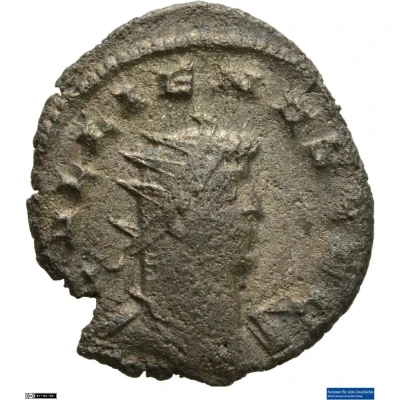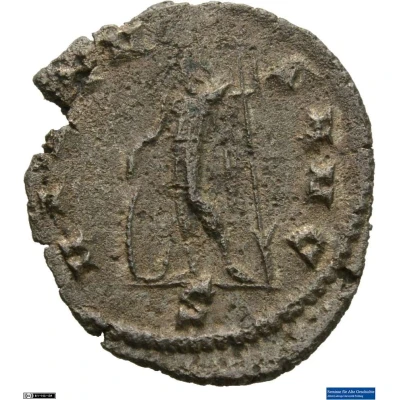Antoninianus - Gallienus VIRTVS AVG
| Silver | - | - |
| Issuer | Rome › Roman Empire (27 BC - 395 AD) |
|---|---|
| Emperor | Gallienus (Publius Licinius Egnatius Gallienus) (253-268) |
| Type | Standard circulation coin |
| Years | 260-268 |
| Value | Antoninianus (1) |
| Currency | Antoninianus, Reform of Caracalla (AD 215 – 301) |
| Composition | Silver |
| Shape | Round (irregular) |
| Technique | Hammered |
| Demonetized | Yes |
| Updated | 2024-10-05 |
| Numista | N#288917 |
|---|---|
| Rarity index | 94% |
Reverse
Soldier, standing left, resting right hand on shield and holding spear in left hand. Officina mark in right field.
Script: Latin
Lettering:
VIRTVS AVG
VI
Translation:
Virtus Augusti.
Courage of the emperor.
Comment
Source:Online Coins of the Roman Empire (OCRE)
Interesting fact
The Antoninianus, also known as the "Gallienus," was a coin introduced by the Roman Emperor Gallienus in 260 AD, during a time of economic crisis and military conflict. It was made of silver, but its purity was lower than that of previous Roman silver coins, which had been minted at a higher standard. Despite this, the Antoninianus remained a widely used coin throughout the Roman Empire until the late 3rd century AD. One interesting fact about this coin is that it features an image of the Roman goddess Victory (VIRTVS AVG) on its reverse side, which symbolized the Roman Empire's military prowess and power. The coin's design was meant to convey the idea that the Roman Empire was still a dominant force, despite the challenges it faced during this period. Overall, the Antoninianus is an important coin in the history of Roman numismatics, as it reflects the economic and political changes that took place during a critical period in the Roman Empire's history.

